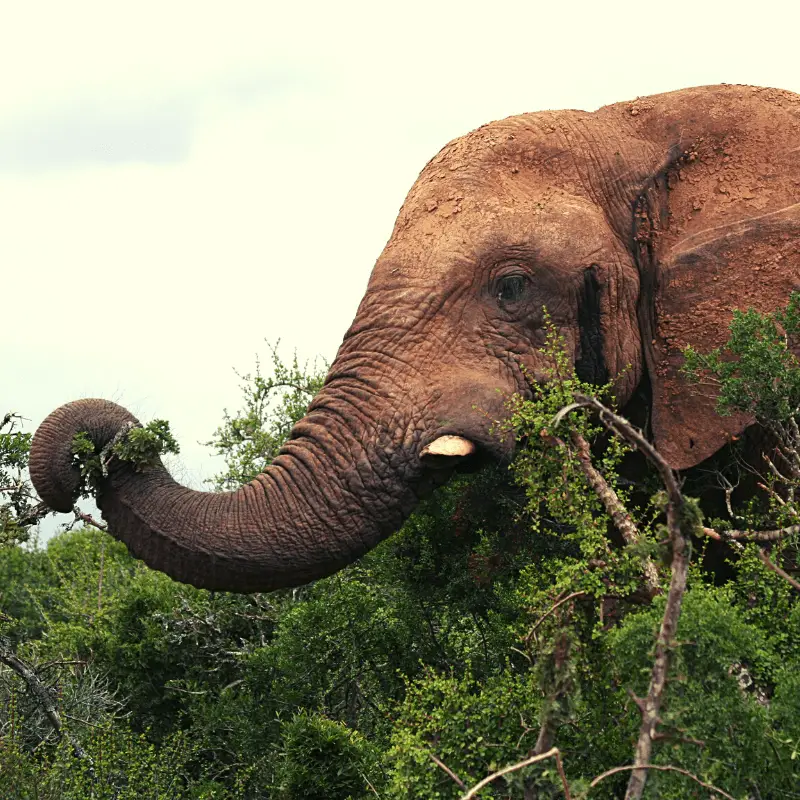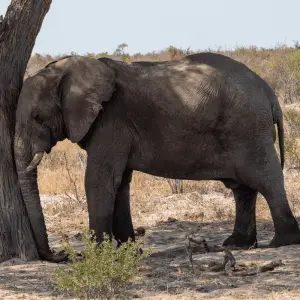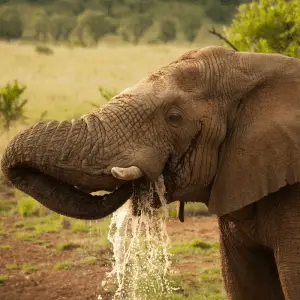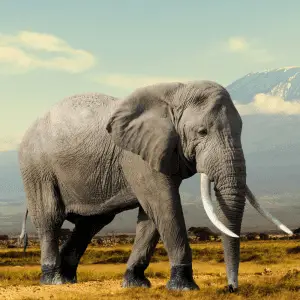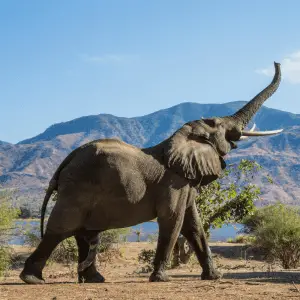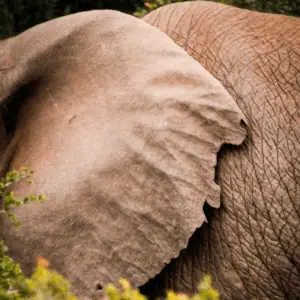As the largest terrestrial animal, elephants consume a massive amount of food every day. As they have enormous bodies, they consume a significant amount of food to stay alive. It is not surprising that their diet consists of many unique food items. So, what do the elephants eat? Let’s find out!
Elephants are herbivore mammals with flat teeth that help them grind vegetation properly, such as grass, fruit, leaves, roots, bark, and bulbs. Herbivores only eat things that need photosynthesis to live.
How much food does an elephant eat?
An African elephant can consume up to 600 pounds of vegetation per day. Compared to that, smaller Asian elephants eat up to 300 pounds of food per day.
For example, if you fill one cup full of vegetation, you multiply that amount by 300 or 600. That’s the amount of food an elephant consumes a day!
These gentle giants tend to eat a lot and spend about 16-18 hours per day feeding. Apart from eating hundreds of pounds of food each day, an elephant drinks between 70-200 litres (15-50 gallons) of water daily, depending on the temperature. The hotter the weather, the more an elephant needs to drink.
Eating Habits
The amount of food an elephant consumes can change depending on its habitat, physical requirement, and availability.
In some places in Africa, elephants must travel hundreds of kilometres in search of water. In such cases, they drink vast amounts of water at one time to compensate for the loss of water from their body. For example, the elephants living in the hot region drink more than those living in a lower temperate area.
How far do elephants walk a day in search of food?
Elephants often take long and arduous journeys in search of water and food. Usually, elephants walk up to 50 miles a day to find sufficient food and water for their whole family.
How fast do elephants move?
Elephants have an average walking speed of 4.5 mph (7. km/h) and an average running speed of 15 mph (24 km/h).
How long does it take an elephant to walk 50 miles per day?
Elephants have an average walking speed of 4.5 mph. The calculation time for elephants to walk 50 miles will take an elephant 11 hrs and 6 minutes.
Compared to that, a human can walk 50 miles in 14 hrs and 17 minutes at an average speed of 3.5 mph.
Herd Importance
The most important thing to an elephant is its family. The elephant family does not break up even when they get hungry. Instead, they stick together and walk long distances to find something to eat. What helps an elephant put family or the herd first is that they are altruistic, meaning they are highly unselfish and greatly care for one another.
What is a group of elephants called?
A group of elephants is called a herd.
Who is the leader of a herd of elephants?
The leader of an elephant herd is the oldest dominant female. This female is called the matriarch. She is responsible for keeping the herd together, making travel decisions, and watching the herd.
Diet
As elephants are browsers and grazers, they tend to eat many different vegetation types. For example, elephants consume the leaves and bark of the plant. In The Wild, they do not discriminate between any plants. Elephants tend to feed on everything, right from the grass to the trees.
- Grass
- Fruit
- Leaves
- Roots
- Bark
- Bulbs
- Seeds
- Flowers
- Soil
- Vegetables
50% of an elephant eats daily is made up of leaves. The other 50% is supplemented by the rest of the above items we have mentioned. While eating, elephants do not discriminate between various plants. They will willingly feed on grass as well as the leaves of big trees.
Tree bark is one of the favourite food items of elephants. Tree bark is the primary source of calcium for elephants. It also provides them with roughage and fibre, which helps them in their digestion process. They need to consume tree bark to get the necessary fibre content regularly.
Elephants also dig up soil to fulfil their salt and mineral requirements.
You can often see elephants in zoos or safari parks munching on hay. Hay is considered a major food component of elephants in captivity. Hay is chosen as one of the leading diet components of captive elephants because of its nutrition.
Compared to wild elephants, captive elephants have a good variety of fresh fruits and vegetables.
Elephants love to munch on apples, carrots, bananas, tomatoes, potatoes, turnips, and cabbages.
How many different species of elephants are there?
Right now, only three species of elephants are still living in the world. They are the African Forest Elephants, the African Bush elephants, and the Asian Elephants. All other elephant species that one time used to roam on earth are extinct. Some other elephant species had been extinct since the last ice age.
How many different species of elephants are there?
- African Forest Elephants
- African Bush Elephant
- Asian Elephants
Right now, poaching and human invasion are threatening the elephant population severely. The loss of habitat has created significant human-elephant conflict in many areas of Africa and Asia. It has also led to a further reduction in the number of wild elephants. Because of their size, elephants require many forest areas to roam around and consume food. Once the elephant visits a food area, they move from this place and only returns once it is re-vegetated.
Facts
- Elephants are brilliant animals, and they have an excellent memory. They can clearly remember events from their early life and keep their memories intact throughout their lives.
- Elephants use their trunks as a multipurpose tool. They primarily use their trunk for respiration. Other than that, they use it for smelling and as a hand. In some cases, elephants also pick up vibrations using their trunk.
- Even though it may seem very unlikely, elephants are also great warriors. These animals have proven helpful in warfare thanks to their intelligence, size, and strength. In ancient India, Persia, and China, elephants were often used as the king’s ride.
- When provoked, elephants can get angry pretty quickly. Thanks to their enormous strength, elephants can cause significant destruction when they are mad or upset.
- While browsing, elephants often uproot trees. While it may seem a bit destructive at first glance, this uprooting helps new trees to grow, leading to more vegetation. During the summer, elephants use their tusks to dig holes to expose underground water.
- Most of the time, elephants die due to starvation. When they grow old, elephants lose all of their teeth. That means they find it hard to eat as they age, leading to starvation.
- Elephants are very intelligent animals compared to other primates. An elephant’s brain weighs about 5 kg, just over three times heavier than a human brain.
- Elephants have high altruistic emotions, which helps them in motherhood and the family unit.
How many pounds of food does an Asian elephant eat?
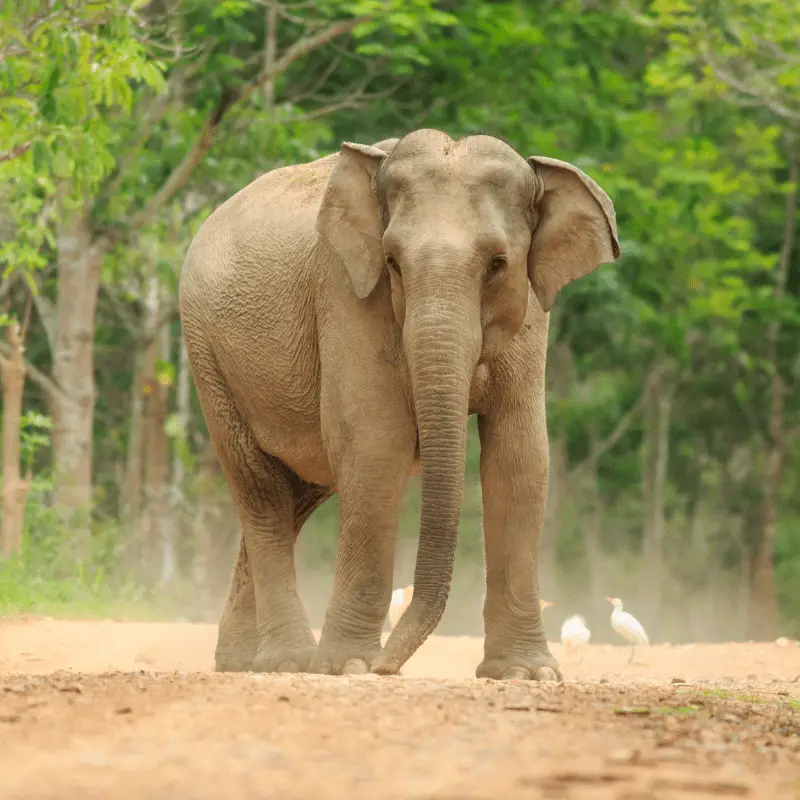
An adult elephant can consume up to 300 pounds of food daily. Asian elephants only eat vegetation, such as grasses, fruits, leaves, roots, bark, and bulbs. Herbivores only eat things that need photosynthesis to live.
How many pounds of food does an African elephant eat?
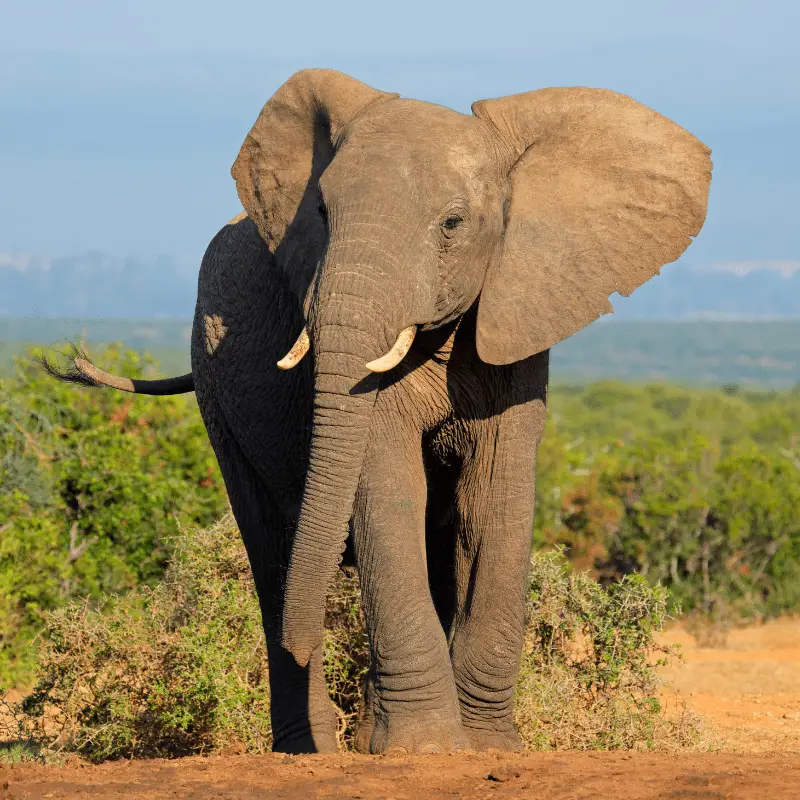
An adult elephant can consume up to 600 pounds of food daily. African elephants only eat vegetation, such as grasses, fruits, leaves, roots, bark, and bulbs. Herbivores only eat things that need photosynthesis to live.
How many litres of water does an elephant drink?
Depending on the temperature, an elephant can drink between 70-200 litres (15-50 gallons) of water daily.
How much milk does a baby elephant drink?
Elephant calves consume up to 20 pints of milk a day. The milk of an elephant is rich in nutrients, and the calf will drink this until they’re about four months old!
Do elephants love to eat bark?
Elephants love to eat tree bark, and it contains essential nutrients. They use their tusks to tear off strips of the trunk and peel away bits of bark for a tasty snack!

